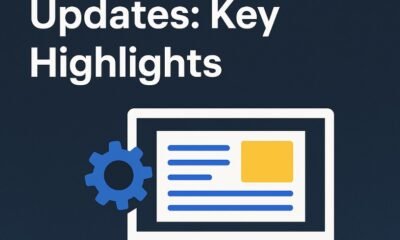Finance
Why the Percentage Budget Needs a Critical Update in 2022

The Percentage Budget is one of the most popular budgeting methods today, but it’s in dire need of an update.
First established by Senator Elizabeth Warren in 2008, the Percentage Budget organizes your household spending into three categories: needs, wants, and savings. Each category gets assigned a percentage of your total net income, which is how it got its name.
You might recognize this budgeting method as the 50/30/20 Budget, which illustrates the breakdown of your income. Needs get 50 percent of your income, wants take 30, and savings receive the final 20 percent for a total of 100.
While these ratios give structure to your spending, sticking to this exact breakdown can be challenging today.
[lwptoc]
What Are Your Needs, Wants, and Savings?
Before you can dive into why this budget needs an upgrade, let’s clarify what we mean by needs, wants, and savings.
Needs:
These are the essentials that you must pay to run your household and live safely. They include bills and payments like housing costs, groceries, transportation, insurance, and the minimum payments on online loans, credit cards, and lines of credit.
Wants:
Your wants make up the frills that make your life more fun or comfortable. They may include tech upgrades, holidays, entertainment, and gifts.
Savings:
This broad category covers both short-term goals like an emergency fund and long-term goals like your retirement.
If you have outstanding credit card balances or emergency loans online, this section should also cover any additional debt payments that go above and beyond your minimum payments.
Check with your lenders that you can make additional payments against your emergency loans or lines of credit. If your lender doesn’t allow prepayments, you might get dinged with a penalty.
Inflation Means Everything Costs Just a Little Bit More
Inflation has climbed sharply to a new record high, reaching 8.6 percent earlier this year. That means you’re paying roughly 8.5 percent more on everything—from groceries and clothing to utilities and pet care.
With everything costing that much more, the original ratios of the Percentage Budget may not work any longer.
What Does an Updated Percentage Budget Look Like?
If you’re struggling to cover all your needs with 50 percent of your net income, don’t panic. The Percentage Budget provides a template you can fine-tune to fit your finances.
Here are three alternatives:
1. 60-20-20
This ratio may be a good idea if you’re dealing with a minor increase in the cost of living, but you want to maintain savings and emergency loan payments.
Under this new regime, your needs take up 60 percent of income, wants just 20 percent, and savings stay the same.
2. 70-10-20
For those who need a little extra help, the 70-10-20 option slashes your wants to just 10 percent of your income. That leaves most of your take-home pay (70 percent) for needs. Savings receive 20 percent to ensure you’re still filling your emergency fund and paying off emergency loans.
3. 80-20
This last option offers the greatest flexibility for those hit hardest by inflation or the lingering pandemic. It preserves 20 percent of your income for the usual savings and debt payments, leaving 80 percent of your income to spend as you need it, regardless of category.
That 80 percent could be a mixture of needs and wants, or mostly needs if your cost of living take up a larger stake of your income.
The Takeaway:
The exact breakdown isn’t what matters. What’s important is that you bring structure to your spending by balancing your needs with your wants and savings. Choose an upgrade that fits today’s financial obligations.
Read more: 5 Easy Ways To Pay A Loan Back Much Faster
-

 Entertainment2 months ago
Entertainment2 months agoBflix.gg Not Working? Here’s Where You Can Stream Free Now
-

 Fashion2 months ago
Fashion2 months agoVintage Styles Making a Comeback: Trends You Should Know
-

 Tech1 month ago
Tech1 month agoLatest Durostech Updates: Key Highlights
-

 Entertainment2 months ago
Entertainment2 months agoIs Shannon Reardon the Same as Swanick? Here’s What We Know






